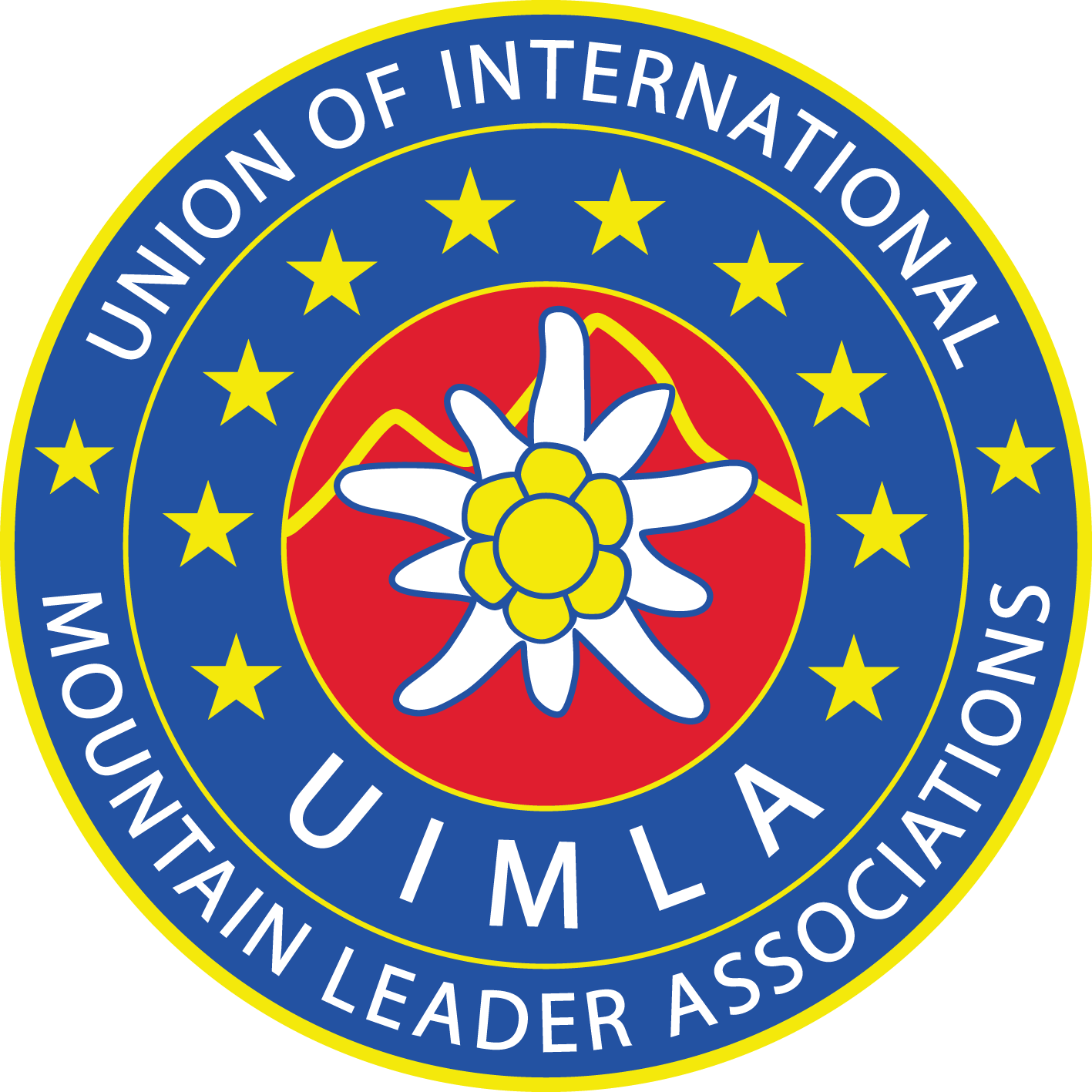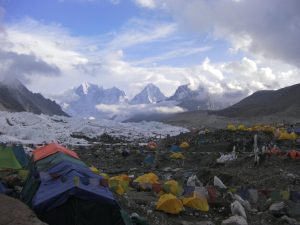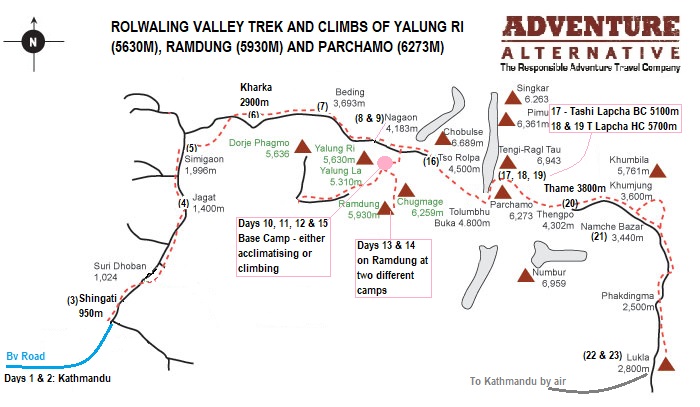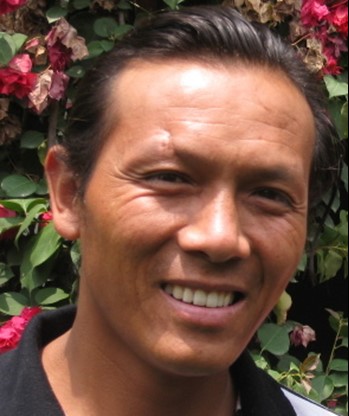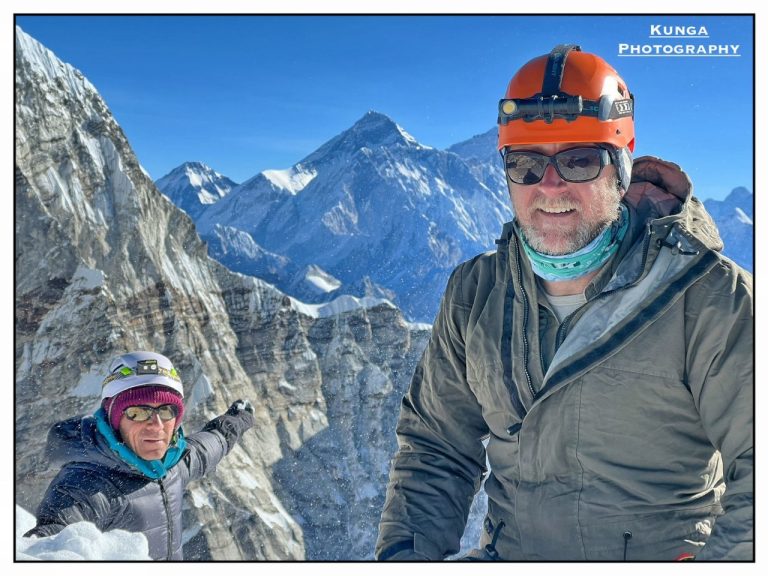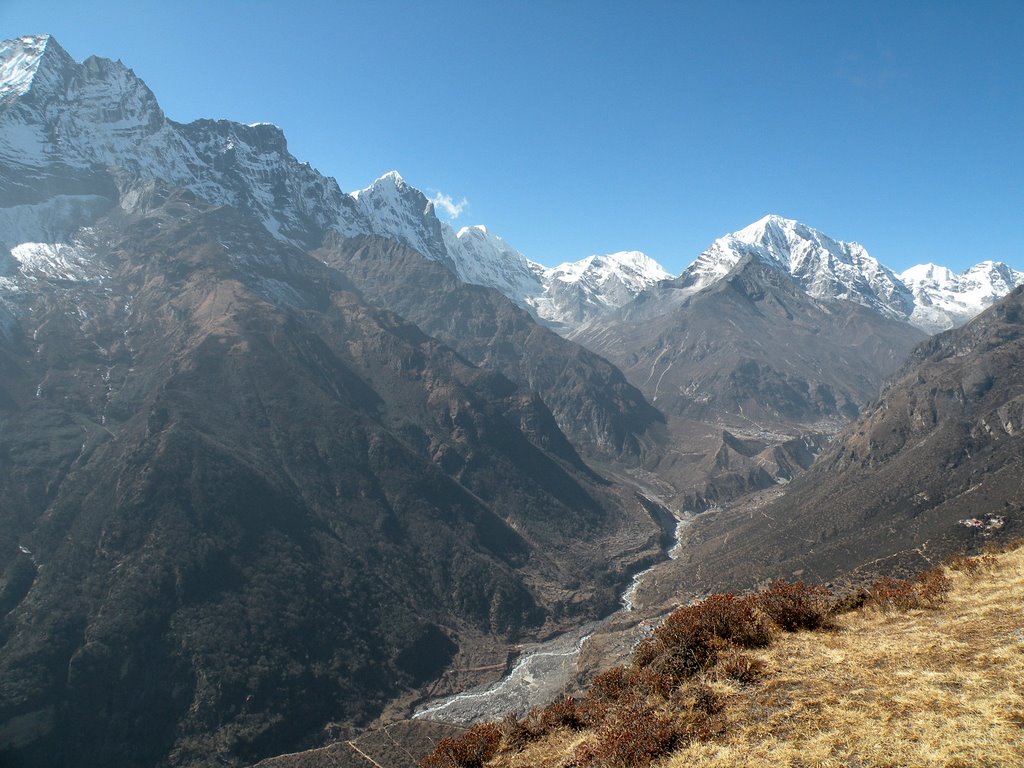
Rolwaling Trek and Parchamo Peak, 6187m
This is a wonderful trek with three stunning climbs of Yalung Ri (5630m), Ramdung Peak (5930m) and Pachermo Peak (6187m). We also cross the Teshi Lapcha La Pass (5700m) but start our journey in the less explored but jaw-droppingly beautiful Rowaling Valley, which is northeast of Kathmandu and west of the Everest / Khumbu region. Rolwaling is a deep Himalayan valley, tucked under the giant snow peak of Gaurishankar (7134m) and considered a holy sanctuary by the local Buddhist inhabitants.
Overview
This is a wonderful trek and climb that starts in the less explored but stunning Rowaling Valley, which is northeast of Kathmandu and west of the Everest / Khumbu region. Rolwaling is a deep Himalayan valley, tucked under the giant snow peak of Gaurishankar (7134m) and considered a holy sanctuary by the local Buddhist inhabitants. The name Rolwaling means, ‘valley carved by a plough’ and its steep cliffs give the impression of a plough-carved furrow. This is a rarely trekked region, with more basic facilities, but the rewarding forests and views are some of the best in Nepal. In 1951 Eric Shipman famously captured on film Yeti footprints in the Rolwaling Valey.
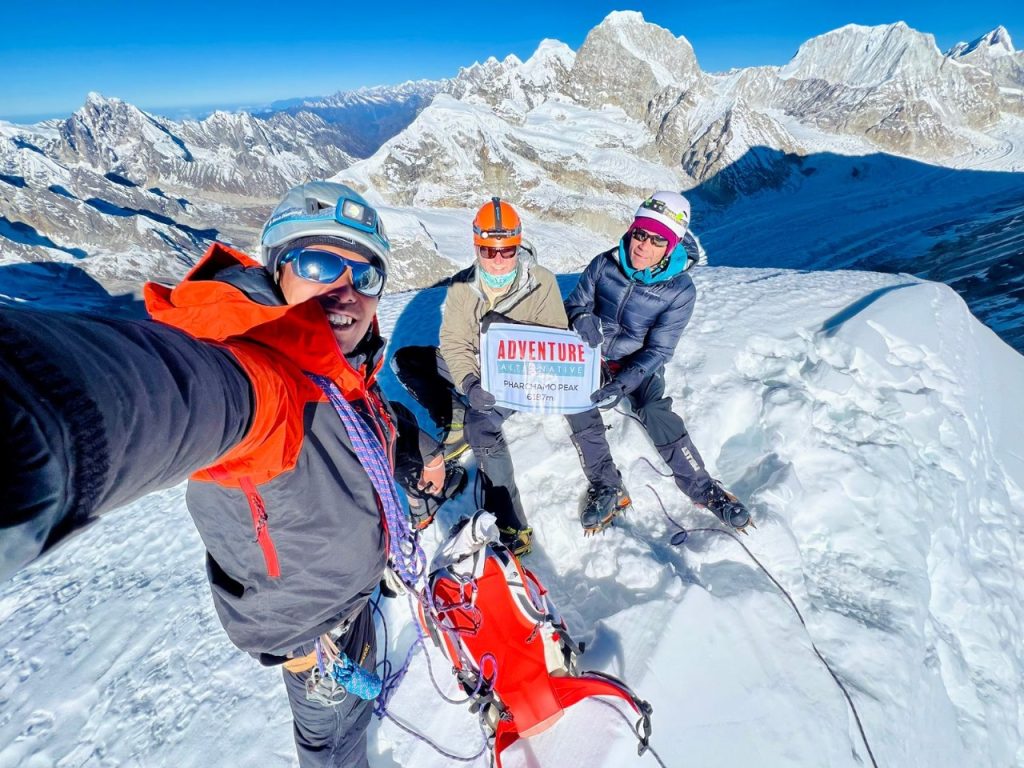
We initially drive to our trek start point and then, as we pass through this stunning region of the Himalayas on foot, we climb a series of three peaks Yalung Ri 5630m, Ramdung 5930m and Parchamo 6187m, before crossing the Teshi Lapcha La Pass (5700M) between the Rowaling and Khumbu areas. If the weather isn’t great then the pass and peak do require some basic winter skills, which you can also practice with your guide as we trek in and also good mountaineering clothing and boots. The lower levels of the trek are straight forward but the higher up sections can be challenging and require good fitness, stamina and determination. After crossing the pass we leave the stillness of the Rolwaling Valley and enter the famous Khumbu region at it’s main town of Namche Bazar. We then trek south towards Lukla and a flight back to Kathmandu.
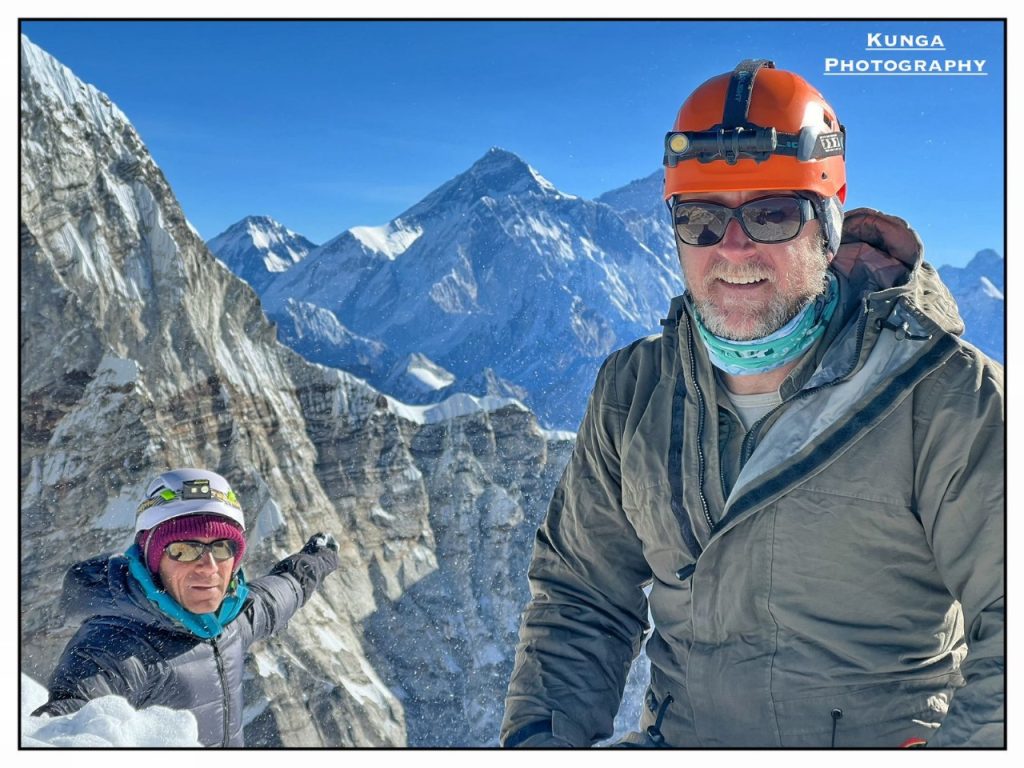
The Rowaling and Khumbu valleys are both justifiably renowned as among the most spectacular trekking locations in the world. This trip visits both and offers a significant Himalayan peak as part of the traverse between them. Along the way we will experience fantastic examples of Sherpa and Tamang culture amongst the towering peaks, tumbling glaciers and shimmering lakes.
What Our Adventurers Think:
I had a fantastic trip and was looked after wonderfully in Kathmandu by Pasang and, on the trek itself, Lopsang and Tendi were brilliant, nothing being too much trouble and always attentive and helpful – you have a great team out in Nepal. I have some very special memories of my trek – the stunning scenery, the walk itself, the people I met on the way and the marvellous sense of achievement at reaching my goal by arriving at base camp; thank you once again for organising it for me.
Rolwaling, Nepal - 2014
This is an independent clip which beautifully shows the trek, the area, her people, the majesty of the mountains and the fun!
Rowaling Trek and Parchamo Peak Itinerary
Please note that the itinerary given is the outline plan. However, we will be travelling in a high mountain environment with a number of unknown influences including weather and rates of acclimitisation of different individuals. Therefore the itinerary is flexible to some extent to allow our leaders to make appropriate decisions on the ground based on prevailing conditions.
International Flight arriving into Kathmandu
Kathmandu – Getting over any jet lag by resting and possible sight-seeing in Kathmandu
Kathmandu-Simigaun – We drive East then North North-East from Kathmandu for around 200km. Although a relatively short distance, the drive takes us along some stunning mountain roads and can take 6 to 7 hours. We then camp overnight at Simigaun.
Simigaun-Kharka – Today is a fairly short day but tough in terms of altitude gain. We begin by continuing along the ridgeline. Through the ‘v’ of the Rolwaling valley ahead of us we can see the sharp peak of Gaurisankar (7135m) standing on the border with Tibet. We then begin to contour the Northern edge of the valley before dropping down slightly to Kharka.
Kharka-Beding – We are starting to gain some altitude now and today’s trek will be taken slowly. We continue along the Rowaling valley as the forests start to thin out around us. To our left the valley’s Southern slope rises up and up to eventually become the ridge-chain forming the border with Tibet. Ahead of us the superb south west face of Kang Nachugo rears up to 6737m as part of this chain. Soon we arrive in Beding, nestling in a gentle bend in the river, where we will spend the night.
Beding-Nagaon – Today is a fairly short day as we continue along the spectacularly steeply sided Rowaling valley to the village of Nagaon. Na is said to be the oldest Sherpa village in the area and holds particular cultural significance to them. We should have plenty of time in the afternoon to do some exploring.
Nagaon – Today we will rest and relax to aid our acclimitisation. We will probably take a short local walk to keep active. Our guides and porters will make final preparations of all our food and equipment that we will need to take up to the higher camps for the next few days.
Nagaon -Yalung BC – Today is short in distance but requires quite a large increase in altiude. After a few kilometres along the valley floor we turn south and climb up out of the main Rolwaling valley and into the Yalung valley which meets it at right angles. Needless to say, the ascent will be hard on the lungs but the fantastic views out to the North will help to make it worth it.
Yalung BC – After our hard climb and sharp increase in altitude the day before we will spend today resting, eating and generally acclimitising. We will probably also take an easy walk up the valley towards the Yalung La where we will see the first sections of the climbs to Yalung Ri and Ramdung. Today will also give us an opportunity to refresh our minds on the snow & ice equipment and techniques that we will need on the following days.
BC-Yalung Ri-BC – Today we will start early for our ascent to the nearby peak of Yalung Ri. This is a fairly short and relatively easy ascent but with spectacular views and a real feel of climbing in the Himalaya.
BC-Ramdung Camp 1 – We will pack light as we set off to make high camp up to the south, on the way to Ramdung Peak. We will pick a suitable spot at around 5400m, often close to the side of a glacial lake.
Ramdung Camp 1-Ramdung Camp 2 – We again continue to the south toward our objective of Ramdung over mixed glaciated ground. We will pick a suitable spot at around 5600m but within sight of the final push across the glacier and up to the peak. The climb does not give a huge increase in altitude but puts us in a good position to begin our summit attempt.
Ramdung Camp 2-Ramdung Go-BC – It will be an early ‘alpine start’ today as we make the most of the more stable conditions in the early morning and maximise the available daylight of the day. This will be a long, tough day as we move over mixed glaciated and rocky ground to where the Yalung and Ramdung glaciers meet and then up the long, broad ridge to the summit of Ramdung. After a quick stop at the summit we retrace our steps down past our high camps and back to our basecamp for a well earned rest.
Yalung BC-Tsho Rolpa – After dropping to the valley floor and turning east we soon meet the inflow of the Rolwaling valley from the north and begin a steep section up the moraine dam to the Tsho Rolpa lake. This lake had been growing steadily from the 1950’s and lead to fears about the stability of the moraine dam at its western end. As a result a channel was cut through the moraine dam and an engineered sluice installed to help relieve the pressure. We will pass along the flank of the lake and camp either alongside at Kabug or just past the lake.
Tsho Rolpa-Dhagarding(Tashi lapcha BC) – We now make our way further up the valley towards the the head of the Trakarding glacier on the west flank of Parchamo, and where the Drolambau glacier tumbles down from the valley to the north. Depending on the conditions on the hillside and the glacier its self we will pick a route up to a rocky rib on the outer south east edge of the valley corner where we will site our camp.
Dhagarding- Tashi Labsta Pass (5760m-Tashiphuk High Camp) – We will make an early start to make the most of the more stable, frozen, slopes above us. Parchamo will keep us in the shade so the first few hours will be cold as we push on slowly up the Drolambau glacier with Teng Ragi Tau towering in front of us. As we reach its flank we double back on ourselves on a glacial ramp up to the Tashi Labsta Pass. Here we emerge into the full force of the sun and get our first view down into the Thame Khola valley as it drops toward the Khumbu. We go a little past the pass and round to a large overhanging cave at the foot of the Teng Ragi Tau where we make our high camp.
High Camp-Pachermo Peak- high camp – If we are all feeling well acclimitised the previous evening, and the weather is good, we will have an early start this morning to begin our summit attempt. We cross the glacier at the pass and then rope up to begin the steeper ground. We are essentially following the long ridgeline up to the summit but it will involve some degree of winding back and forth around undulations and pinnacles before we reach the summit. The view out from the summit takes in an incredible vista with far too many peaks to name but including Everest, Lhotse, Makalu, Cho Oyu and even Annapurna and Dalaguri if it is clear. After the obligatory photos we will carefully begin the descent back to our high camp.
High Camp-Thame – Today’s section starts off with the hard stuff. We will leave early to again make the most of the time when the ice and rocks are well frozen and stable. We pick our way carefully down initially steep ground and then to a set of small lakes. From here it is an easier few kilometres down to Thengpo. If we all feel good we may push on down to Thame to give us more time in Namche tomorrow.
Thame-Namche Bazaar – Today is a relatively long walk but on easy ground and down hill pretty much all the way into Namche Bazaar. Namche is the ‘capital’ of the Sherpa people and has steadily grown over the years. It now fills a greater portion of the natural bow in the hillside and has a fine array of shops selling everything from souvenirs to knock-off mountain gear.
Namche-Lukla – The long hill up into namche is well known by trekkers on the Everest Basecamp trail. Thankfully we will be aclimitised to several thousand metres up and going downhill. This will allow us to enjoy the warmth of the valley and the fragrant forests. We drop down to the spectacular bridge at Larja and along the Dudh Kosi river, after a short climb up to Monjo we sign out of the Sagarmatha National Park and make our way to Phakding then a short climb up to Lukla for the night.
Spare Day – this can be due to weather or acclimatisation and can be used at any point in the itinerary
Lukla-Kathmandu – We will be up early to get our kit checked in for the flight back to Kathmandu. The planes whine as they power up before carreering off down the sloping runway and off into the valley and down to Kathmandu. We will have plenty of day left in Kathmandu to have a good shower and either relax or begin to explore the city.
Kathmandu/spare day/departure – Having the whole of today free allows us further flexibility if we are delayed on our climbs or for the flight back from Lukla. However if all goes to plan then today we have a full day free to see some of the sights in Kathmandu or the nearby valley. There are hundreds of temples and interesting sights in and around Kathmandu and we can help you to decide on and plan a good taster. On this day, travellers can also depart Kathmandu for international flight home.
Ready for an Adventure of a Lifetime?
Choose a scheduled date or contact us to set up private dates or a bespoke itinerary. The minimum deposit is £200.00 and the balance is due six weeks before travel.
Fixed Itineraries
| Start Date | End Date | Days | Price (per person) | |
|---|---|---|---|---|
| 12/10/2025 | 03/11/2025 | 23 | £3,695.00 | Book Now |
| 11/04/2026 | 03/05/2026 | 23 | £3,695.00 | Book Now |
| 11/10/2026 | 02/11/2026 | 23 | £3,695.00 | Book Now |
Private Itineraries
Our Parchamo Peak, 6187m Experts
Pasang Tendi Sherpa is one of the company directors in Nepal and a mountain leader. He has been working with Adventure Alternative since 2005 and has made three climbs of Mount Everest with Gavin.
He lives in New York with his wife Sarasoti and their two children Jubilee and Elli Dolma, and he travels to Nepal during the trekking seasons and helps manage the company and run some treks and climbs.
He has had plenty of experience managing expedition and...
Rolwaling Trek and Parchamo Peak Cost From £3'695.00*
INCLUDES
- All in-country logistics & support
- Airport transfers (international and domestic)
- Land transport for climbers, guides and all staff to Chetchet
- English speaking trekking guide and climbing guide(s)
- Porters and catering team
- Accommodation during trek (camping & lodges) with 3 meals a day
- Peak climbing permits for Ramdung and Pachermo Peaks
- National Park and local entry fees / permits and TIMS card
- Tents, camping equipment & camping fees
- Climbing ropes and group climbing equipment
- Lukla to Kathmandu / Ramechhap domestic flight
- Staff insurances and food / accommodation / travel
EXCLUDES
- Air fare to Kathmandu
- Accommodation in Kathmandu (~ £15 – £25pp/n) – we can book this for you. Click here for details
- Trek accommodation upgrades
- Nepal tourist visa ($40 for 30 days)
- Travel Insurance (~£60-90)
- Sightseeing excursions in Kathmandu (£varies)
- Meals in Kathmandu (~£50)
- Mineral water, soft / hard drinks on the trek or personal costs like charging, showers laundry etc (~£30-50)
- Tips / bonuses – this is a multifaceted expedition which attracts a slightly different tip / bonus system, which needs to be considered financially, as it is an additional trip cost. In general, tips will be expected for guides and porters as per our normal guidelines which you can see here. In addition, this expedition also requires you to cover a Peak climbing guide bonus for two peaks being Ramdung and Parchermo (typically $300 / guide / peak / group) and also a Porters high pass bonus (typically $90 / visiting climber).
* Our price above is based on a team of 5 people and reflects a post monsoon (Autumn Sept – Dec trek / climb). A pre monsoon (high season) trek / climb is ~ £200 more per person. This trip is incredibly labour intensive due to the camping elements.
Payments
A deposit of £200 is required on booking to secure your place and we ask that the remaining balance (trip price minus the deposit) is paid in full 6 weeks prior to your departure. When you book with us you’re given your own secure online account which you can access 24/7. Through this account you can edit your booking, add flight, health, insurance and dietary details and also make interim payments. We make payments as flexible as possible and you can choose, if you wish, to pay a bit off your trip fee whenever it suits you.
Adventure Alternative Nepal is the local provider for this trip and we can vouch for proper staff salaries, insurances, training and equipment. Our company invests heavily in our local companies and you will have full access to the staff handling your trip by email or skype if you wish.
Rowaling Trek and Parchamo Peak Kit List
- Large duffle bag or rucksack & liner
- 45 Ltr day pack
- Stuff sacks, waterproof, various sizes
- Expedition Jacket, primaloft or down
- Waterproof jacket and trousers, goretex or equivalent (softshell)
- Gaiters
- Trekking trousers and shorts, Tshirts, shirts
- Fleece or woollen tops
- Base layer tops and bottoms
- Thin socks and thick socks
- Warm hat, buff/balaclava, sunhat
- Liner gloves, warm gloves, mitts
- Sunglasses Cat 3 UV polaroid
- Mountaineering boots graded B1 or B2 to accommodate crampons
- Trekking boots and hut shoes
- 4 season sleeping bag (comfort temperature -20C) and compression sack
- Thermarest or thick foam sleeping mat for camping only
- Walking poles
- Head torch & spare batteries
- 2x 1 litre drinks bottles and covers
- Pee bottle
- 12 point crampons
- Mountaineering harness
- Walking axe & leash
- Climbing slings 2 x 120cm
- Screwgate karabiners x 2
- Ascender (jumar)
- Prussic loop
- Wash Kit and first aid, towel
Items Available for Rent from Adventure Alternative (Pick Up in Nepal)
Mountaineering Harness
Descender, ascender, karabiners and slings
Crampons
Walking Axe
Boots for the climb need to be of a type that will allow fitting of crampons. They also need to be warm and fitted well to your feet. For Island Peak you will need boots graded at least B1 for crampon use. If you are planning on doing more mountaineering in the future on higher or colder routes it may be worth investing in B2 hybrid or B3 rigid Plastic boots both of which will also be suitable for Island Peak. Full 8000m triple boots are not needed for this climb but could be used if you already have them.
Personal first aid kit contents
Paracetamol
Ibuprofen
Antiseptic Wipes
Adhesive Plasters
Blister Plasters
Zinc Tape
Insect Repellent
Antihistamine tablets
Sunblock Cream
Water Purification Tablets
Loperamide tablets
Rehydration Sachets
Personal Medication as required:
eg. Anti-Malarials, Asthma Inhalers, Insulin, Epi-Pen etc
Lip Salve
Throat Lozenges
Latex gloves
Crepe Bandage
Hydrocortisone Cream
Prochlorperazine tablets (for sickness/nausea)
Ciprofloxacin tablets (general antibiotic; prescription required)
Acetazolamide tablets also known as Diamox (altitude prophylactic; prescription required)
Note: you must check with your GP for your personal suitability to all medicines and their possible side effects and interactions. Please inform us of the details of all regular medication that you intend to use though the course of your trip and any relevant allergies and medical history related to them. You also need to check the requirements and regulations of the airline and all countries visited in relation to medications. For example; laws governing transport of some pain control medication and the need keep insulin at a suitable temperature, ie not in the cargo hold.
Our clothing needs to be adaptable to the variation in conditions and the best way to achieve this is through a layering system, preferably with zips in the front and even armpits. These zips can be opened and closed as we move to regulate temperature without needing to stop and physically remove garments. Another very useful way to regulate temperature is simply by putting on or taking off a hat and gloves. A couple of pockets in your outer layer can be invaluable for this, or evern sufiing them down the front of your top.
The kit list above can be used as a guide but you may have clothing systems that you have found to best suit your own preferences. The general idea is to be equipped with shell layers for wind and precipitation, insulating layers for temperatures down to perhaps -10 or even -15, base and mid layers for layering flexibilty and good quality boots with fully compatible crampons.
In addition, whilst it could be -10 on the summit, it could also be +20 or more with strong UV in the valley or on the glaciers in the afternoon. It is likely therefore that you will leave camp in the morning with maybe a trekking trousers and over-trousers, baselayer, warm mid-layer, soft-shell, belay jacket, windproof layer, two hats and thick gloves. By the time you return in the early afternoon you are likely to be wearing just thin trekking trousers, thin long sleeved base layer top, sun hat & sun glasses with everything else stuffed into your daysack.
Length and Terrain of the Rolwaling Trek and Parchamo Peak
This is a challenging 19 day trek (23 day trip if including days in Kathmandu, travel days and spare bad weather day) were daily walking can range from 4 to 7 hours with the average being around 5hrs per day. The initial terrain is relatively straight forward with undulating paths to follow as we ascend through the amazing forests and trek up to higher ground. This trek has it all from wide open trails to scrambling, to glacial travel to snow covered peaks to climb. You will need to have experience of high altitude trekking, and some basic winter skills knowledge. This is more challenging than the Khumbu or Annapurna regions and will require good fitness and cold weather clothing.
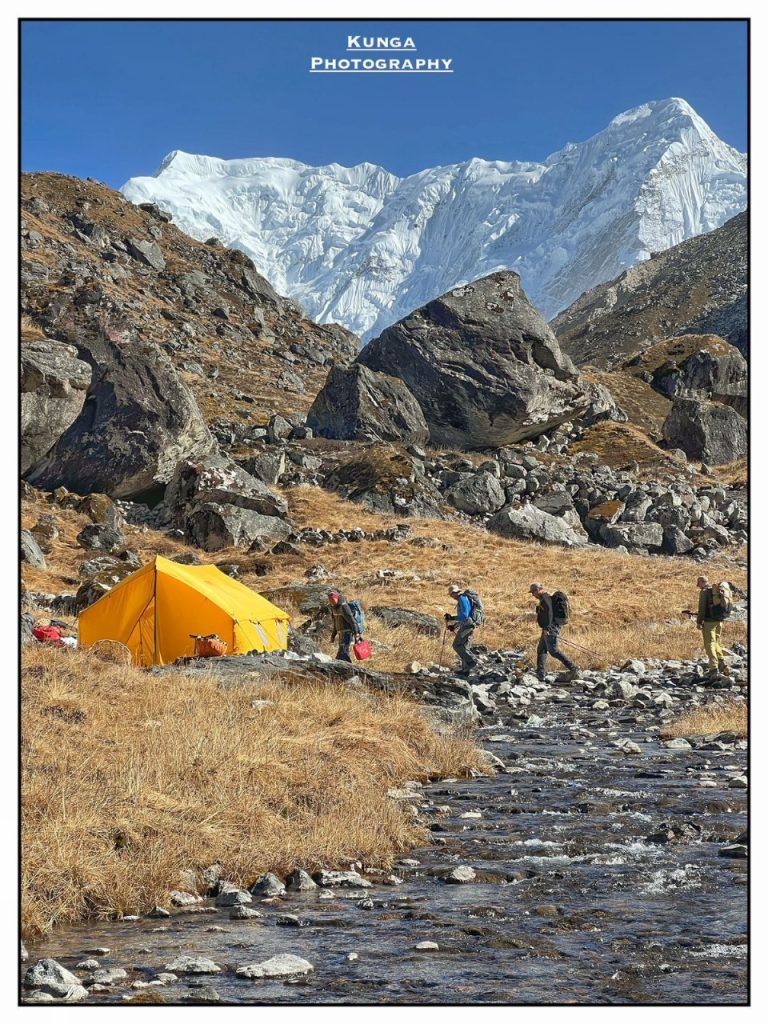
The climbing sections for Yalung Ri, Ramdung and Pacharmo Peak are a fantastic introduction to climbing high altitude peaks in the Himalayas whilst using multiple base and high camps to ascend and acclimatise well. The highest peak, Pacharmo and the others are not classified as technical climb, but it is likely that crampons and support ropes will be used on account of the altitude, weather and the peak’s remoteness. We will practise the these basic skills on our approach to this section.
The climbs of Yalung and Ramdung are not very common objectives so we may well be breaking trail through the snow. If there has been recent snow or if the snow is soft this can be hard work. If the snow is well consolidated or if another team have made a trail then it is much easier. However, these ascents will be hard work due to the terrain and altitude in any conditions.
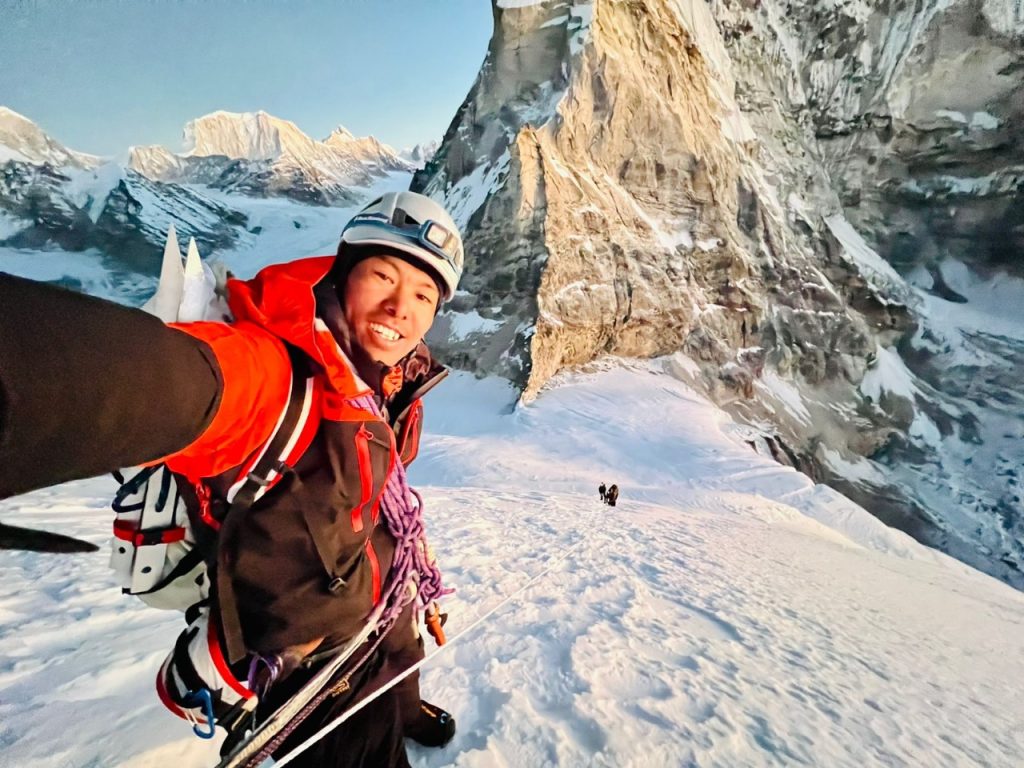
Getting up to Tesi Lapsta Pass is over moderately steep snow in places so it will be quite tiring, but we will take our time and move steadily to save energy and sweat.
The Parchamo summit day is up a moderate snow slope and following a ice/snow ridge. This does have large drops falling away on either side which can make it feel rather exposed but it is by no means a knife-edge. You will need to be able to travel carefully and confidently and maintain your concentration whilst tired and at altitude. We will make the decision as to whether to fix ropes or to travel as roped teams subject to conditions on the day. The ascent of Parchamo is certainly challenging and can take 6 – 8 hours, but after an undulating and at times strenuous trek it’s usually a straight forward ascent as everyone by this point, is very fit and well acclimatised. The views from the summit are jaw dropping with views to the west on a clear day over all of the Rolwaling region and reaching as far as Langtang, and to the east, the famous mountains of the Khumbu dominate the skyline and with Mount Everest to the north east and to the north – Cho-Oyu and Gyachung Kang.
We will give training in safe glacier travel and in the use of all the safety equipment. However you will enjoy the trip all the more if you are already familiar with travel on ice and snow using crampons, walking axe and roped safety systems. If you are unsure as to whether your level of experience is appropriate please do contact us.
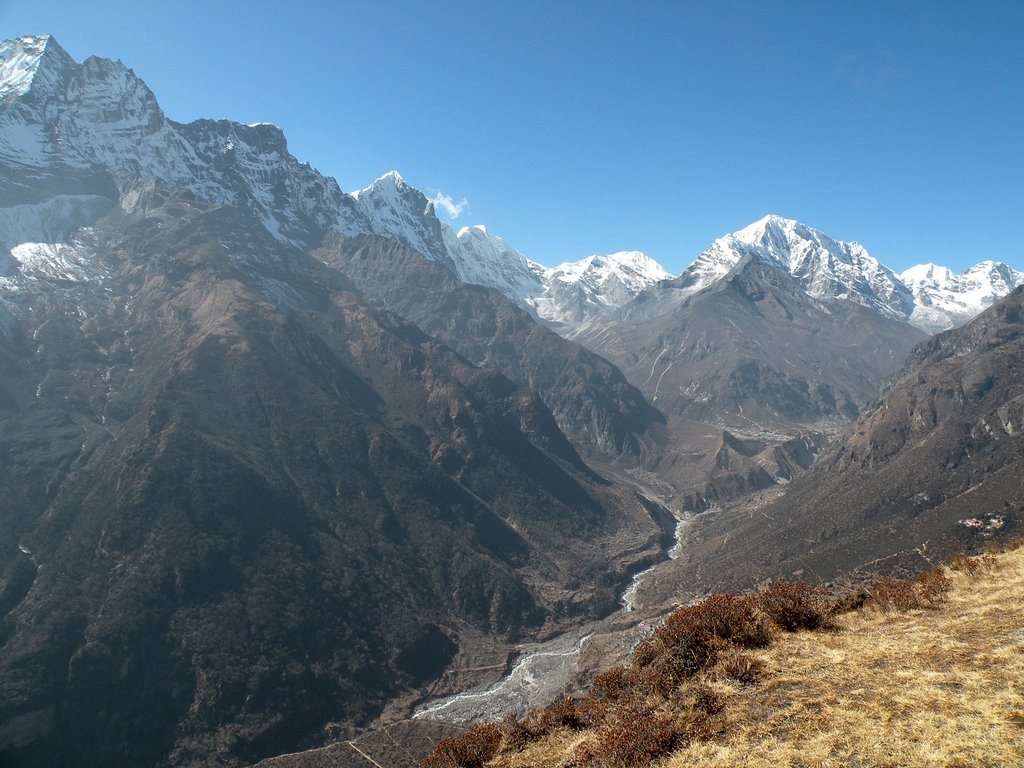
Altitude Profile for the Rolwaling Trek and Parchamo Peak Climb
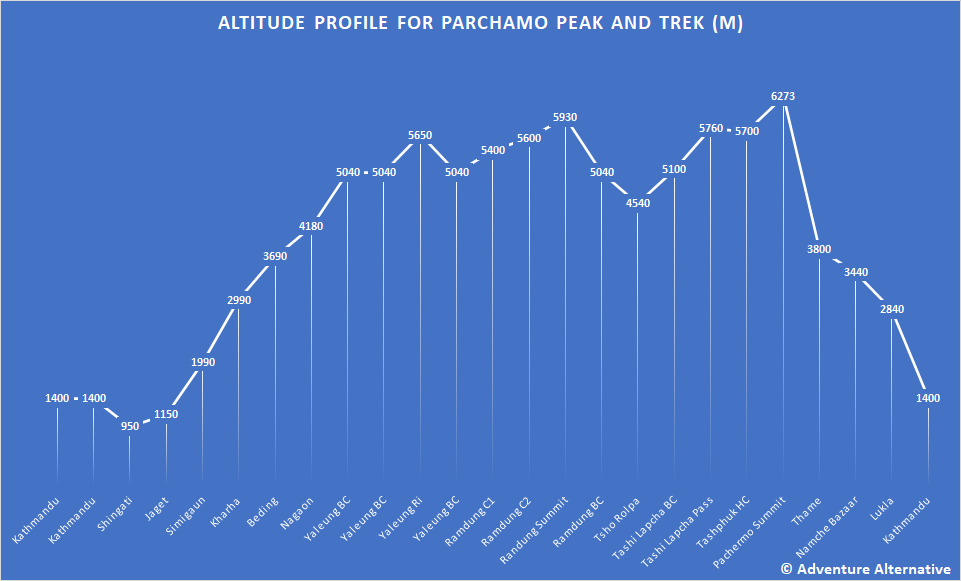
Accommodation on the Rolwaling Trek and Parchamo Peak Climb
This trek is a blend of camping and in lodges at certain places. The more traditional and quieter Rolwaling Valley section and the busy town of Namche Bazar in the Khumbu are quite contrasting. The former is far less westernised and more rural with very few trekkers. If you wish to upgrade to a lodge in this region there are a few ‘home-stay’ guest houses and in some places there are a few new-build lodges, but mostly we will be camping and will have a full team of porters, kitchen staff and cooks to ensure you are well fed and comfortable. The final few days of the trek from Thames on, in the Khumbu Valley offer a whole range of lodges which we use. Whilst camping, two people will share a tent for warmth and company and our team will cater for you. When used, lodges have a central communal area with a large stove that provides heat and a cosy atmosphere. The bedrooms are unheated and generally have two beds per room with mattresses, pillows and a blanket. You will need to bring a sleeping bag (4 season is needed for camping or a good 3 season with a good liner) and we’d recommend a pillow case. For the climb section we will spend several nights in tents at our main base camp and our days at high camps on Ramdung and Parchamo an additional silk liner is a good idea to increase the warmth of your sleeping bag for this section.
Whilst camping we will provide you with water for bucket showers. The food provided for you is good quality, and a mixture of local Sherpa and Tamang meals in the first section which are very tasty and more vegetarian based and then food in the Khumbu which tends to be more westernised with lot’s of bakeries with western recipes. You will find a Nepal price guide here. There are also many shops selling all types of drinks and snacks, sweets and chocolate in Kathmandu and the Khumbu but less so in the Rolwaling Valley. You can also buy any gear that you may need, or forget in Kathmandu.
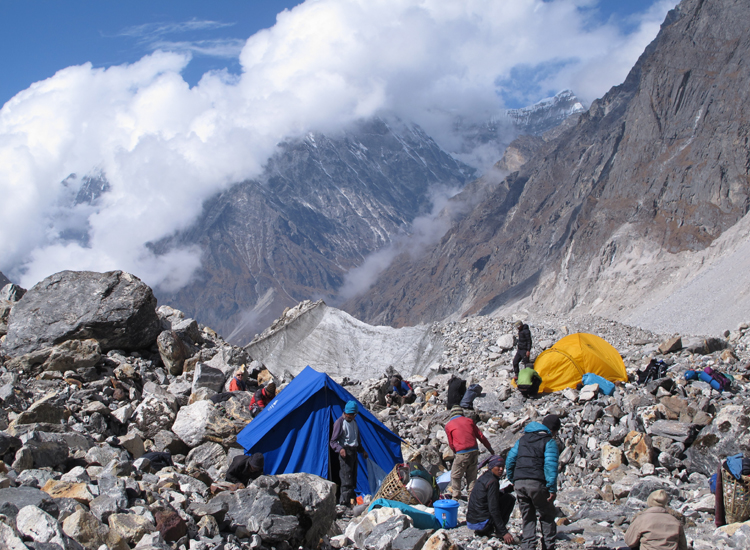
Packing List for Rolwaling Trek and Parchamo Peak Climb
Check out our gear recommendations and also our Nepal Trekking Kit List page for information about what gear and clothing we recommend for the Rolwaling Trek and Parchamo Climb trek.
The basic idea of the clothing you will take is to keep you warm, dry, protected from the sun, able to move comfortably in the mountains and able to be comfortable in the evenings and night.
Kathmandu has an area called Thamel which is full of hundreds of equipment shops, each one an emporium of new, used, quality and fake equipment all very reasonably priced for rental and buying. You can buy almost anything needed for any trek.
The basic idea of the kit that you need is to keep you warm, dry, protected from the sun / rain / cold so that you are able to move efficiently on the mountains and able to be comfortable in the evenings and night. Consider the basics:
- BAGS – Large Duffle bag/Rucksack ~80L (for a porter to carry) + Medium Daypack ~40L (carried by you)
- SHELL – Top and bottoms to keep off wind/rain
- INSULATION – Warm layered system to keep you warm- body hands & Head
- BASELAYER – Thin layers to wick away sweat and to strip down to when it gets hot
- FEET – Comfortable, Waterproof boots to support your ankles over rough terrain. Lighter footwear to change into in the evenings.
- SLEEPING – Warm sleeping bag & Bedroll to get a good nights sleep at the lodges & camps
- EATING/DRINKING – Water bottles & favorite snacks for during the day
- WASHING & MEDICAL – To allow you to wash and maybe stave off a headache or blister
For the climb section you may need to wear crampons which will require a stiffer mountaineering boots and warm clothes. Check out our guide here or you can hire in Kathmandu. If you have any questions about what kit to bring then to please call or email us. Do consider this is a long trek though it is possible to wash items enroute drying them can at times be difficult.
Do have a read of our various Blogs about treks in Nepal and also the ‘More Information’ section, both have tabs on this page and will answer every question you may have! We also have a lot of useful information on our Nepal Preparation page.
Key Information & Guides
General Nepal Information
Health and Safety Guides
Preparation & Kit Guides
Book Your Adventure of a Lifetime Now
Discover our trips to other Countries
Other Trips You May Enjoy
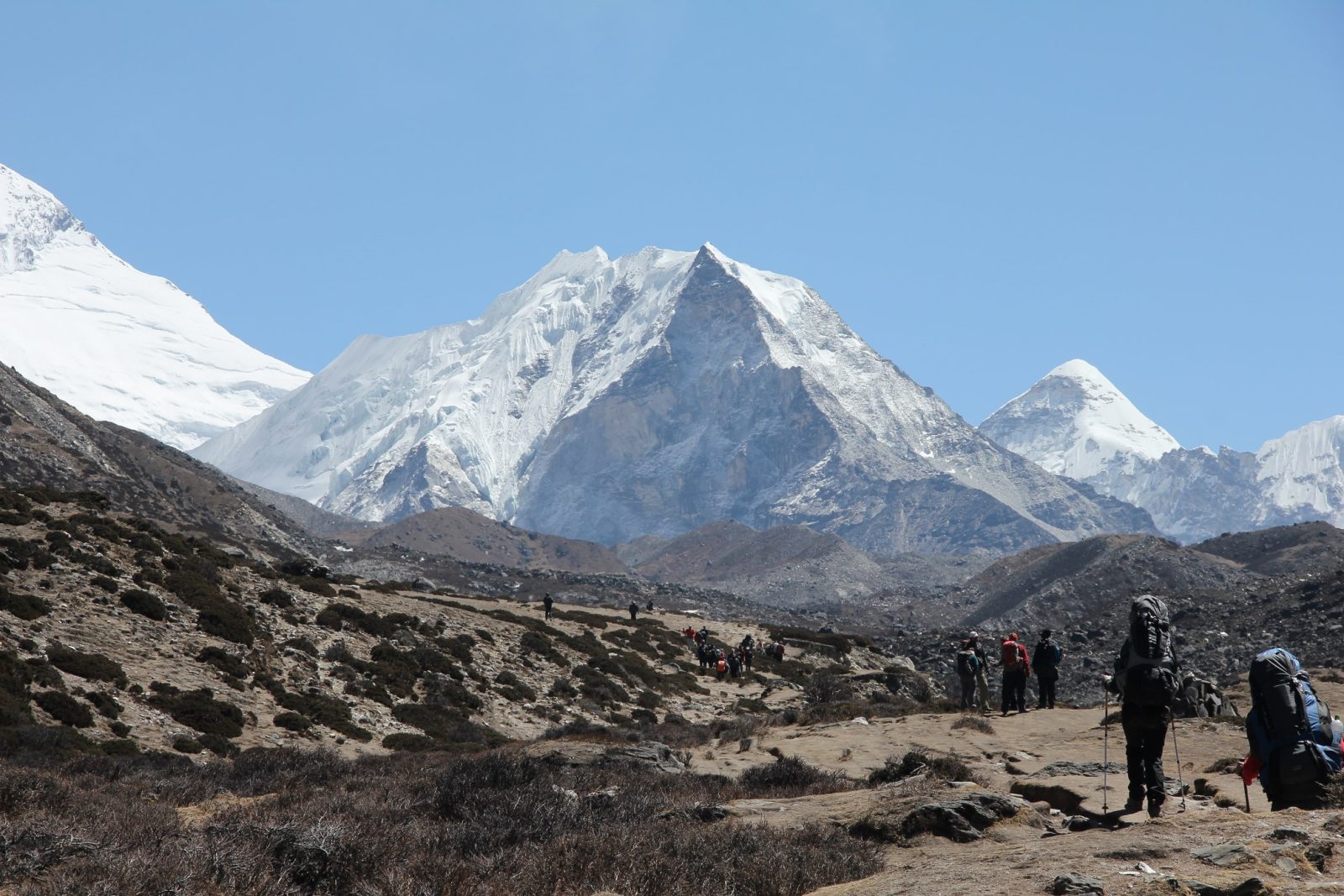
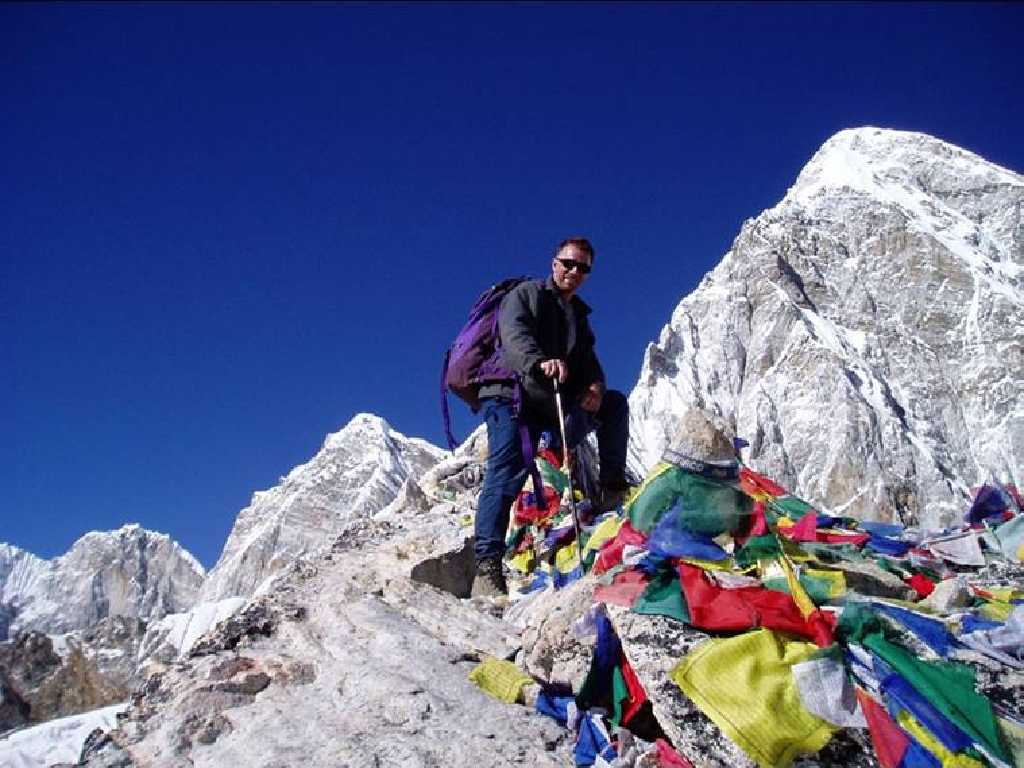
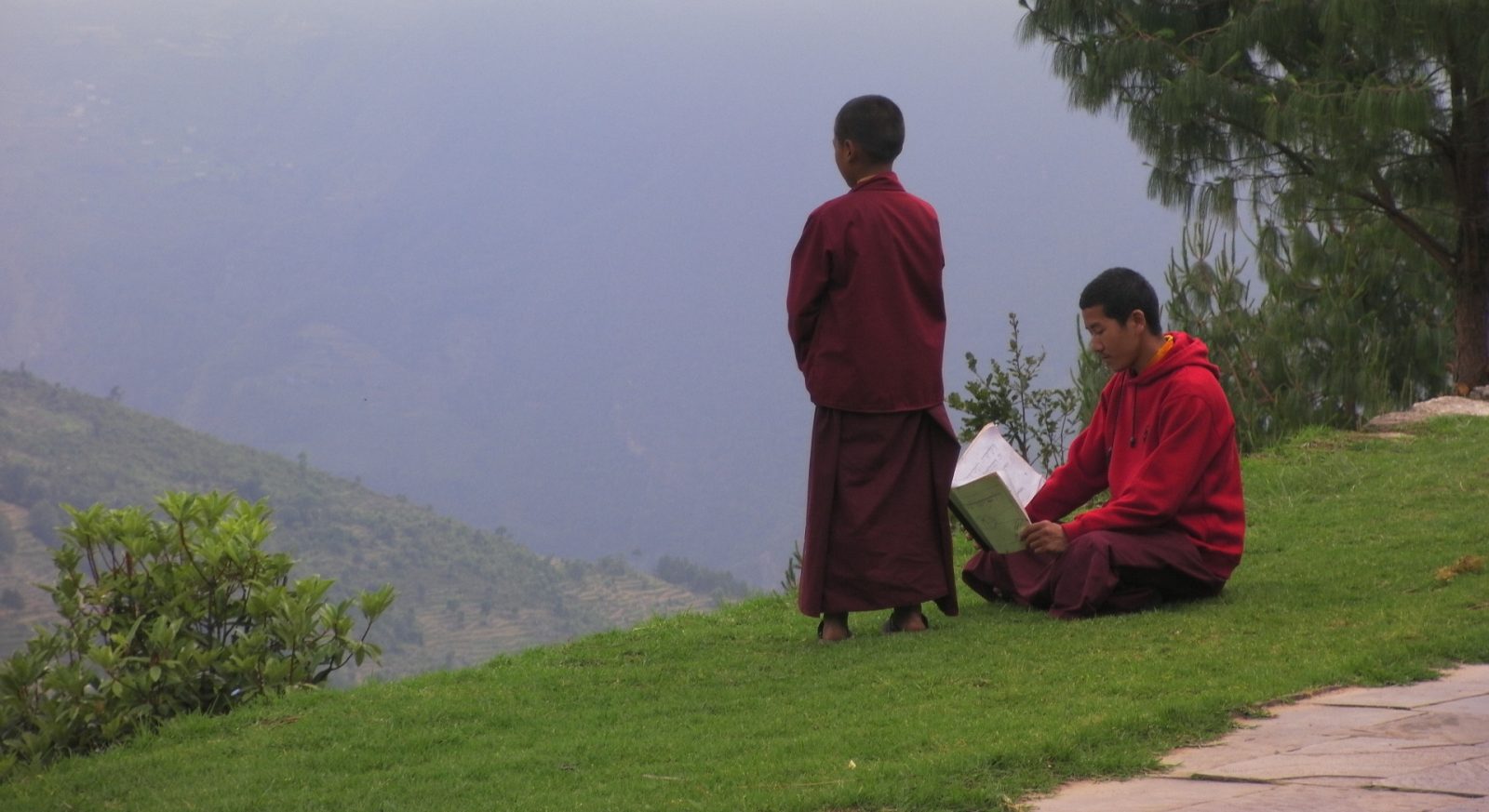
Our Nepal Posts
We’re dedicated to helping you make the most of your next adventure trekking holiday. That’s why we’ve created our travel blog full of in-depth trekking guides, travel inspiration and other fantastic information. Having done all of these climbs many times already, we want to pass on our wealth of trekking wisdom to you.
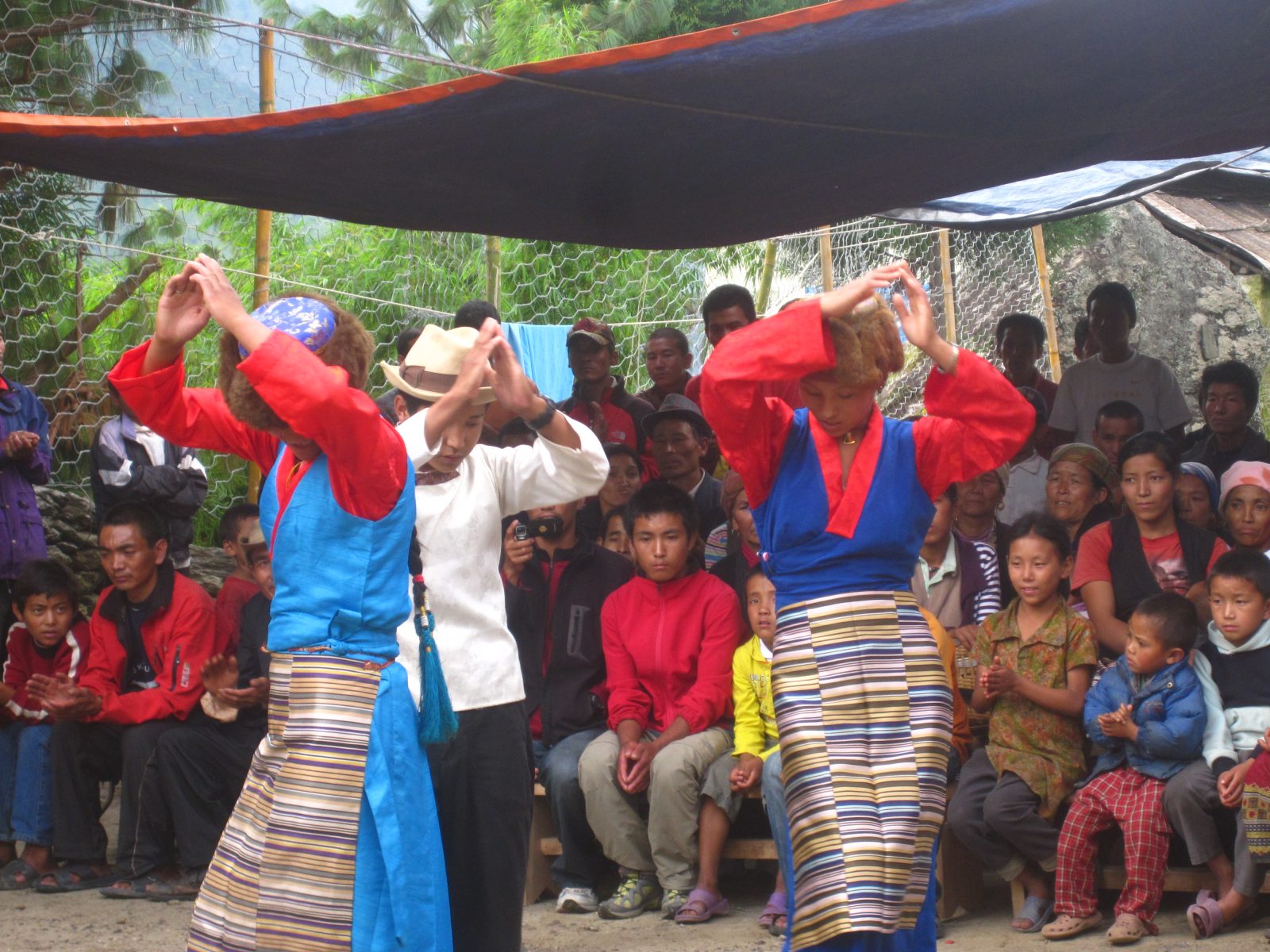
Happy New Year Nepal!
Although our calendar, the Gregorian calendar, is recognised in Nepal they also have others which are also used so it's currently the...
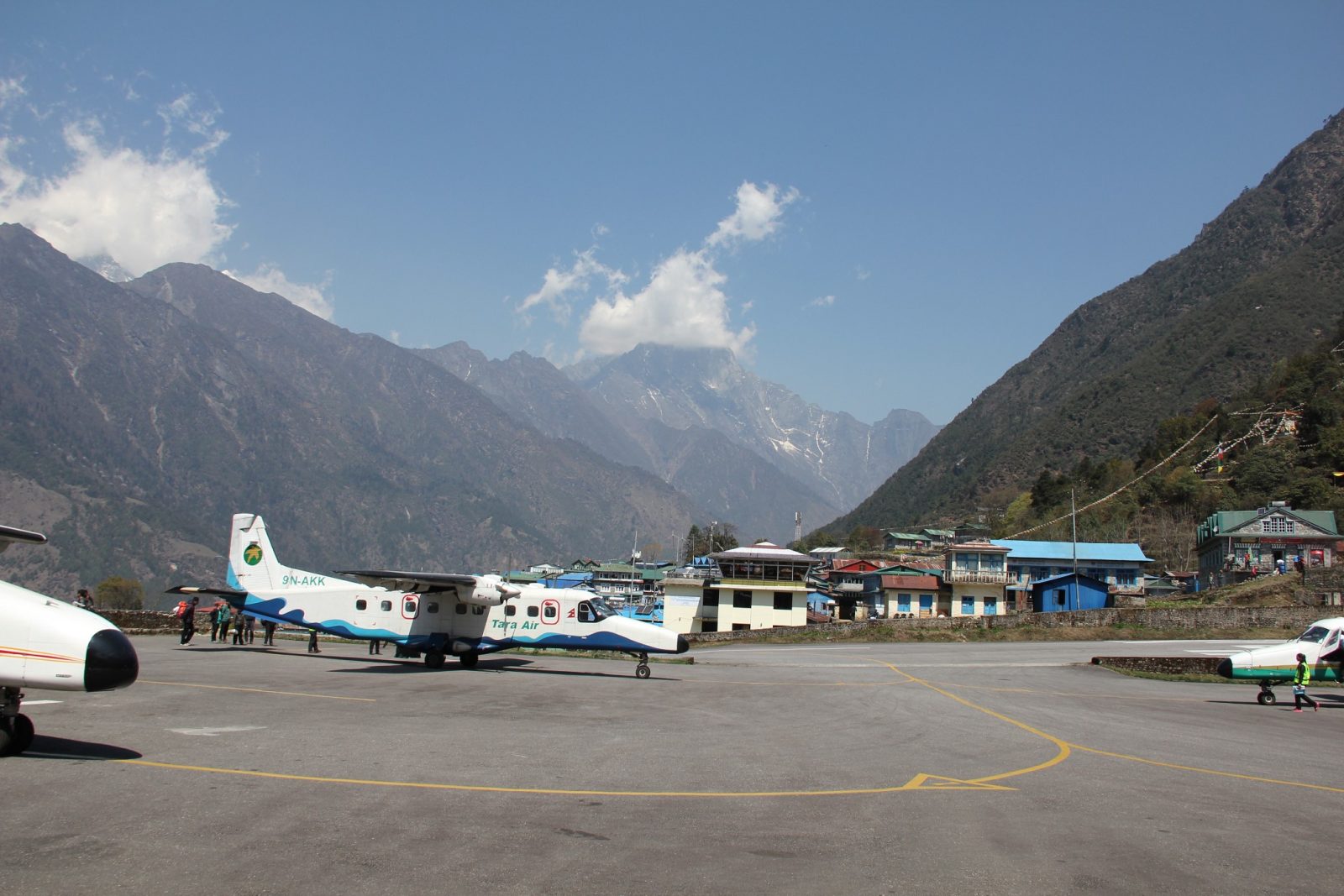
The Road to Everest
It used to be that the quickest way to get to Everest Base Camp was to fly into Lukla airport. Now all that is about to change with the building of...
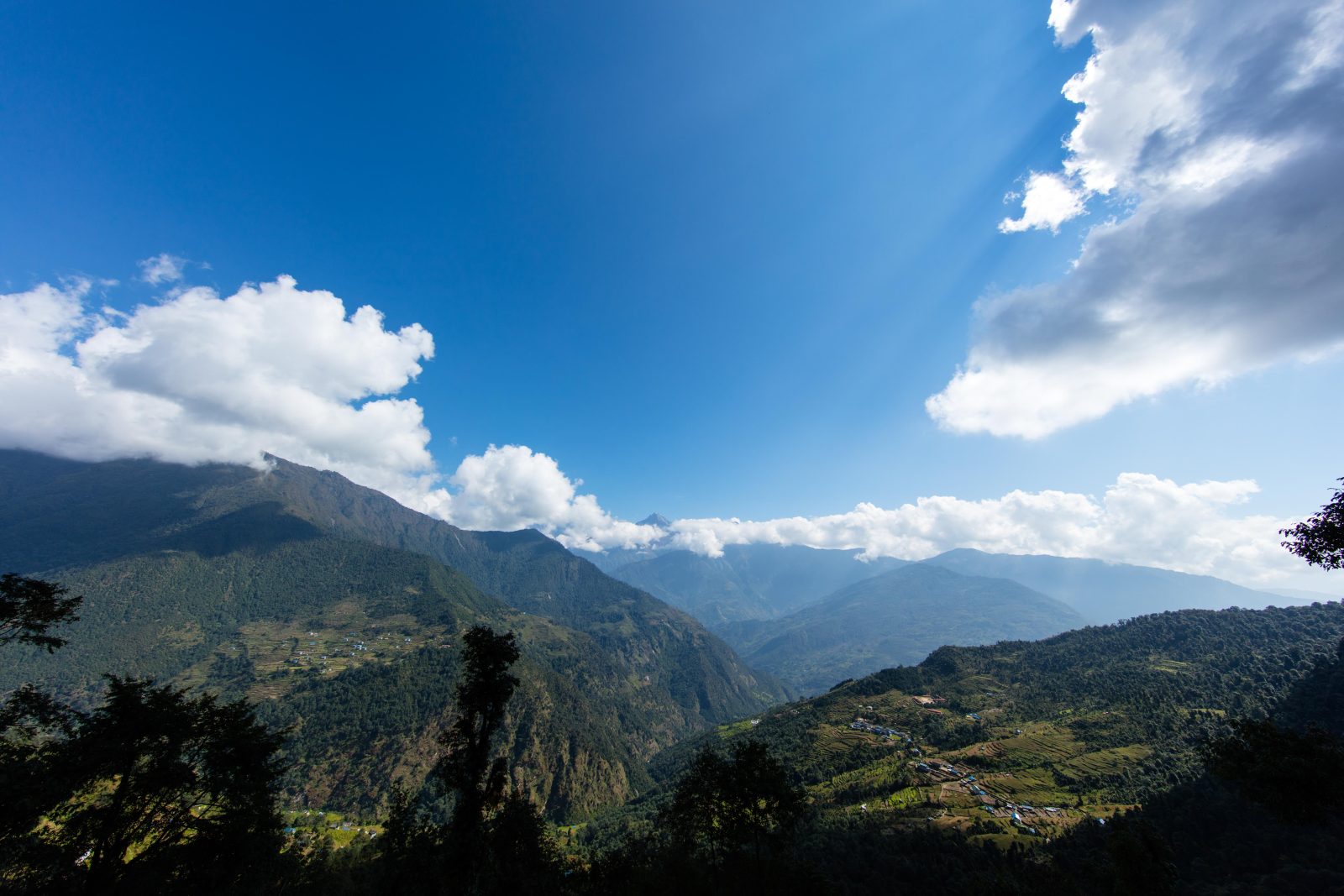
Trekking With Children in Nepal
There are no rules or laws that restrict children trekking in Nepal and it is the perfect place to combine stunning scenery with an incredible...
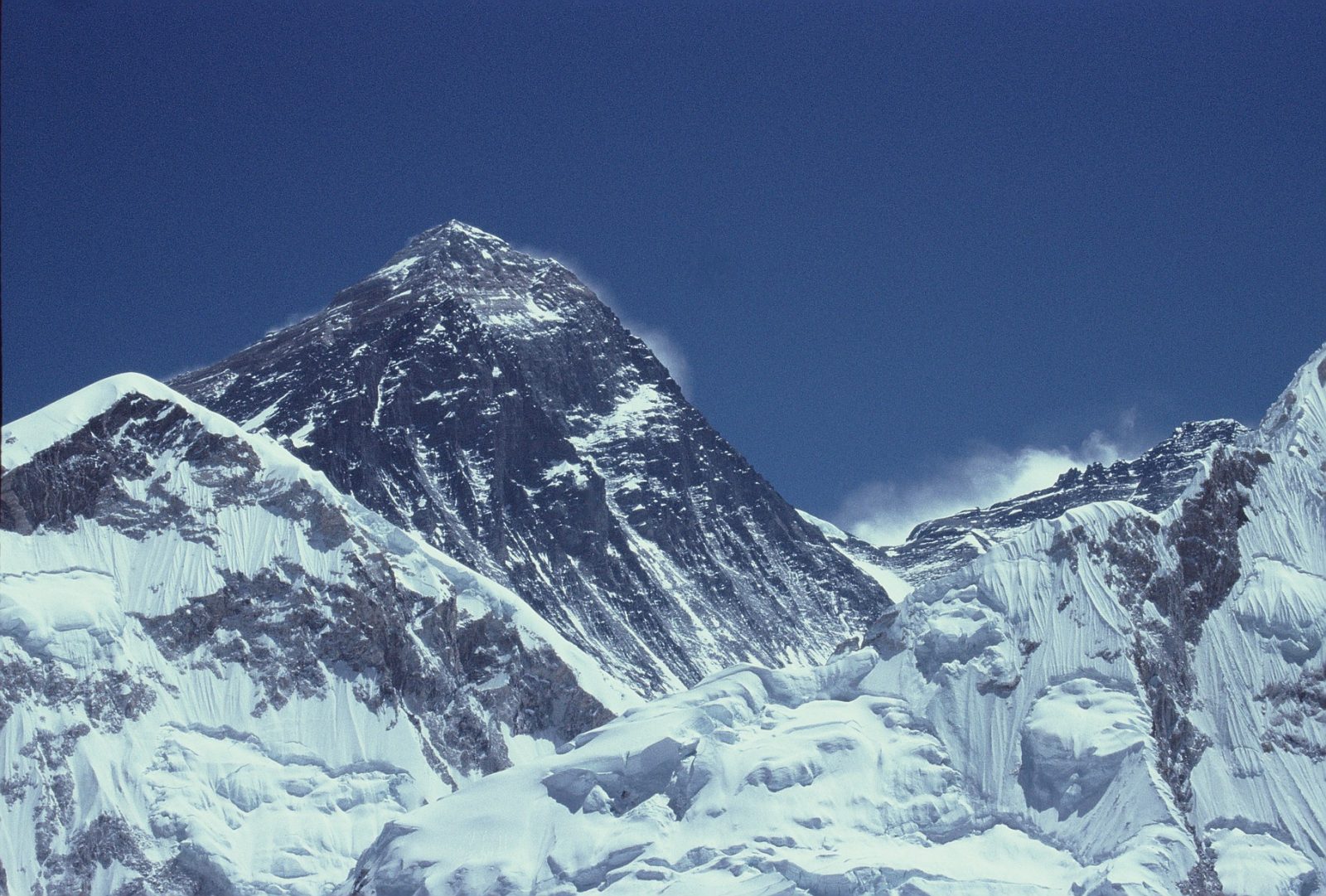
Faking Mount Everest?
An interesting story has come about towards the end of this years season on Mount Everest concerning the claim from an Indian climber that his...

How Hard is it to Trek to Everest Base camp?
A trek to Everest base camp is a very realistic opportunity for most people who enjoy the outdoors and have a good level of fitness and...
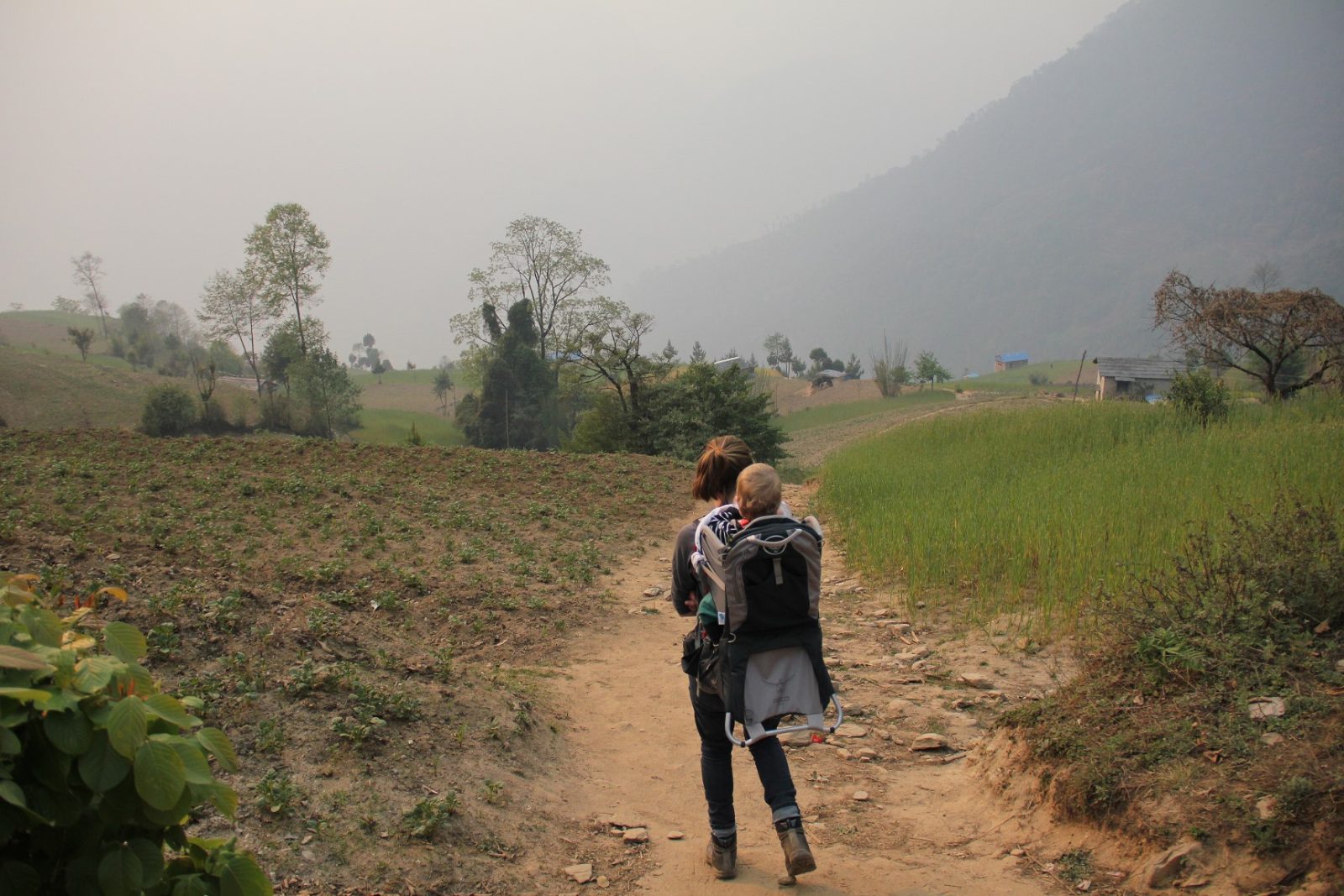
Trekking With Young Children in Nepal
I remember a friend saying he was looking forward to when his children were six or seven years old so that they could go travelling as a family to...

